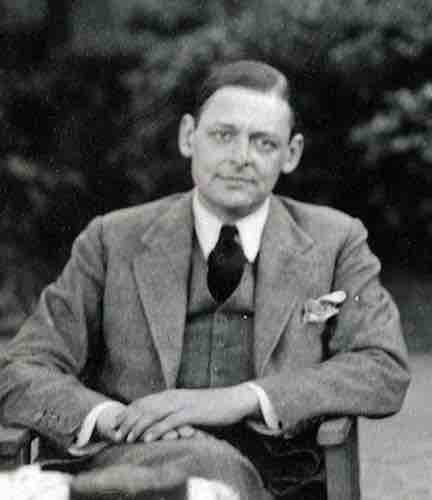The 1920s was a notable period of artistic creativity, especially in literature, with works by several distinguished authors appearing during this time. This creative outburst was personified by the "Lost Generation", a term popularized by American author Ernest Hemingway that came to identify the group of writers and artists, many of them expatriates, who created some of the most significant works of the period. In a more general sense the term identified the generation that came of age during and shortly after World War I, leading to the name, "the World War I Generation." In France, the country in which many expatriates settled after the war, they were sometimes called the Génération au Feu, the "Generation in Flames."
Modernist Life and Literature
The spirit of the Roaring Twenties was marked by a general feeling of discontinuity associated with "modernity" and a break with traditions. Everything seemed to be feasible through modern technologies, especially automobiles, movies and radio programs spreading modernity throughout society. Formal decorative frills were shed in favor of practicality in both daily life and architecture. At the same time, Jazz and dancing rose in popularity, in opposition to the horrors of World War I. As such, the period is also often referred to as the Jazz Age, with F. Scott Fitzgerald's novel, The Great Gatsby, often described as the epitome of the Jazz Age in American literature.
The Great Gatsby
Cover art for the 1925 novel, The Great Gatsby, which author F. Scott Fitgerald used to epitomize the Jazz era and the attitude of post-World War I America.
The loss of self and the need for self-definition is a main characteristic in American modernists, echoing the mid-19th century focus on the attempt to "build a self," as Gatsby does in Fitzgerald’s work. Celebrated modernists also include Ezra Pound, William Carlos Williams, and William Faulkner. While largely regarded as a romantic poet, Walt Whitman is also regarded as a pioneer of the modernist era.
Lost Generation
The term "Lost Generation" first appeared in Hemingway’s novel, The Sun Also Rises, which centers on a group of expatriate Americans in Europe during the 1920s and epitomizes the lifestyle and mindset of the post-war expatriate generation. Hemingway credits the phrase to Gertrude Stein, who was then his mentor and patron.
Ernest Hemingway, 1923
American author Ernest Hemingway, pictured in his 1923 passport photo, coined the term "Lost Generation" to describe those who came of age around World War I.
In his book, A Moveable Feast, published after Hemingway and Stein were both dead and their long-running literary feud finished, Hemingway reveals the phrase was actually originated by the garage owner who serviced Stein's car. When a young mechanic failed to repair the car to her satisfaction, the garage owner told Stein that while young men were easy to train, he considered those in their mid-twenties to thirties, the men who had been through World War I, to be a lost generation, or "une génération perdue." Telling Hemingway the story, Stein added, "That is what you are. That's what you all are... all of you young people who served in the war. You are a lost generation."
Gertrude Stein and Jack Hemingway
Gertrude Stein and Ernest Hemingway's young son, Jack, in Paris, 1924.
Some of the names linked to the Lost Generation movement were not necessarily among Hemingway’s companions in Paris during the post-war period, but are included because their formative years occurred shortly before or during World War I. In addition to Hemingway and Fitzgerald, the movement of writers and artists also loosely includes John Dos Passos, Waldo Peirce, Alan Seeger, John Steinbeck, Sherwood Anderson, Aldous Huxley, Malcolm Crowley, Isadora Duncan, James Joyce, Henry Miller, and T.S. Eliot.
James Joyce was a friend of Hemingway during the years both lived in Paris. Joyce was an Irishman best known for A Portrait of the Artist as a Young Man and his milestone work published in 1922, Ulysses, which reflected the episodes in Homer’s Odyssey. Miller was an American whose most notable works, including Tropic of Cancer and Tropic of Capricorn, were based on his experiences in New York and Paris and were banned for many years in the United States due to their sexual content. The more recognizable pen name of Thomas Stearns Eliot, T.S. Eliot was a British essayist best known for some of the most recognizable poems written in English including The Waste Land and The Hollow Men. He was awarded the 1948 Nobel Prize in Literature.

Thomas Stearns Eliot, 1934
T.S. Eliot was an important figure among the "Lost Generation" movement of writers.
World War Influence
The “Lost Generation” was greatly influenced by the First World War. American modernist writers offered an insight into the psychological wounds and spiritual scars of the war experience, a theme repeated in Hemingway’s work and in Fitzgerald’s portrayal of the lives and morality of post-World War I youth in his book, This Side of Paradise.
In that same vein, but employing a perspective outside of the American viewpoint, the 1929 novel, All Quiet on the Western Front by Erich Maria Remarque, recounts the horrors of World War I and also the deep detachment from German civilian life felt by many men returning from the front. The 1930 film version of the book was nominated for four Academy Awards and won two, including best director for Lewis Milestone.
All Quiet On The Western Front
The cover of the English translation of Erich Remarque's 1929 novel, All Quiet on the Western Front.